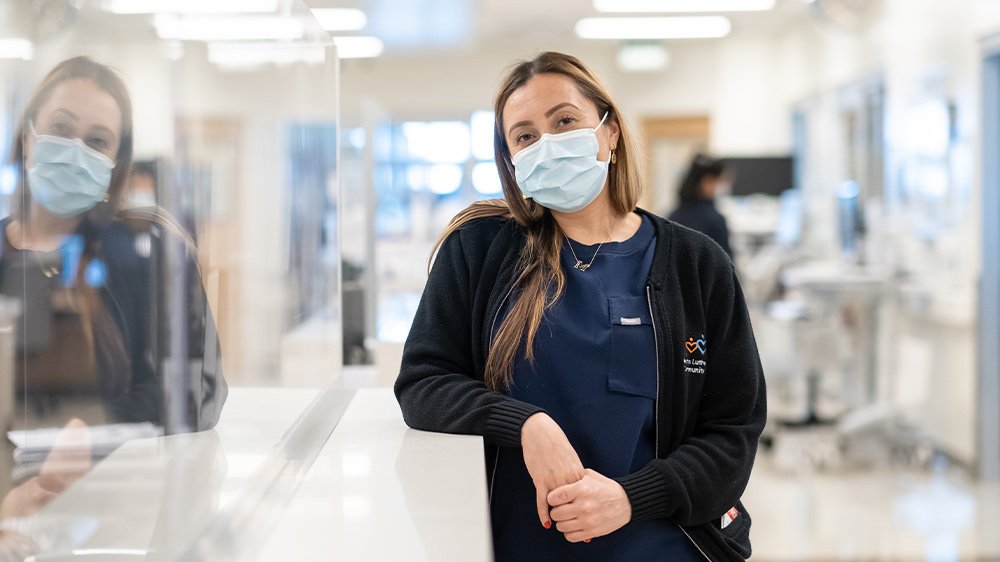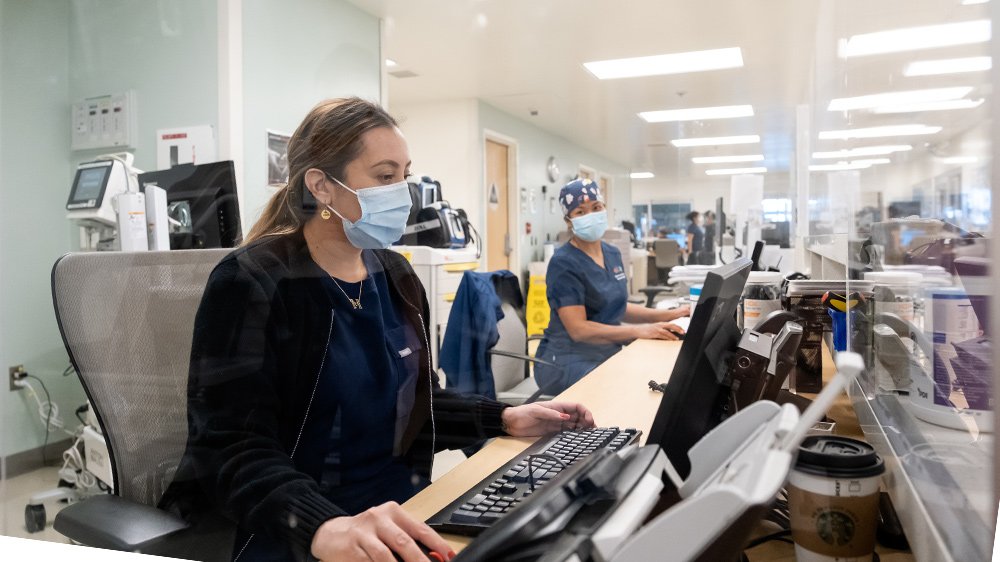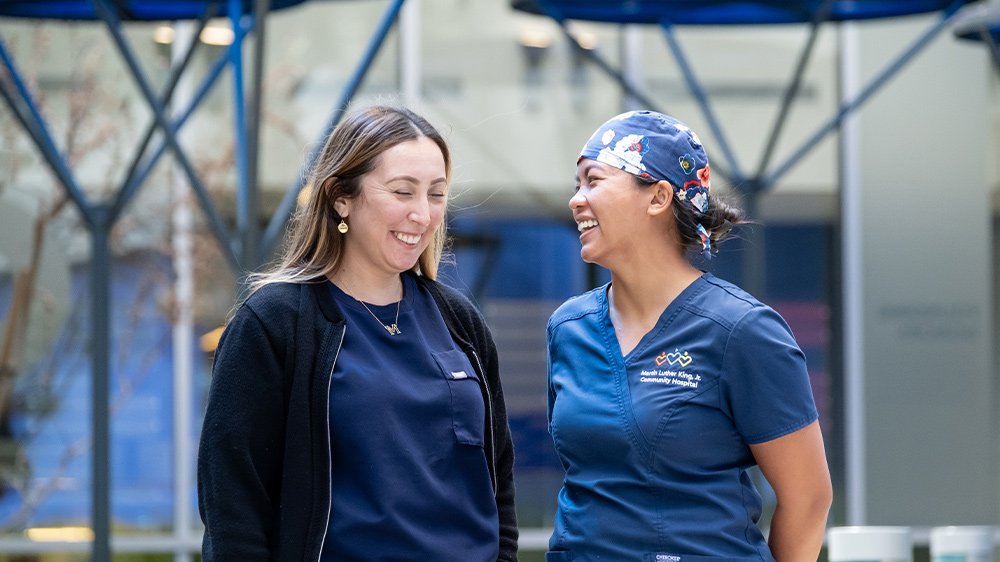The Intensive Care Unit on the ground floor of MLK Community Hospital is calm on this warm, spring day in South LA. A handful of nurses sit behind monitors, separated from their patients’ rooms by a long panel of Plexiglas that stretches the length of their work station. They rise periodically to check patient vitals, moving purposefully in and out of rooms.
“Things are almost back to normal here,” says ICU nurse Amanda Hamilton as she surveys the calm. “We’re all trying to settle into it. But we were at such a high level of stress, just go go go every day, I think we’re all still kind of in shock.”
Just months ago, the hospital was the hardest-hit hospital in one of the hardest-hit regions for COVID-19 infections in the world. During the worst of the surge, hospital leadership made the decision to expand the ICU to another, larger floor of the hospital to accommodate the overwhelming number of severely ill patients.
Patients were arriving in critical condition at a pace unlike anything the nurses had seen before. And they remained in the ICU, fighting for their lives, for weeks on end.


